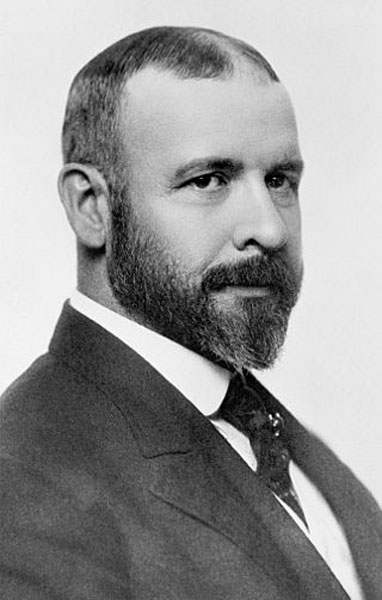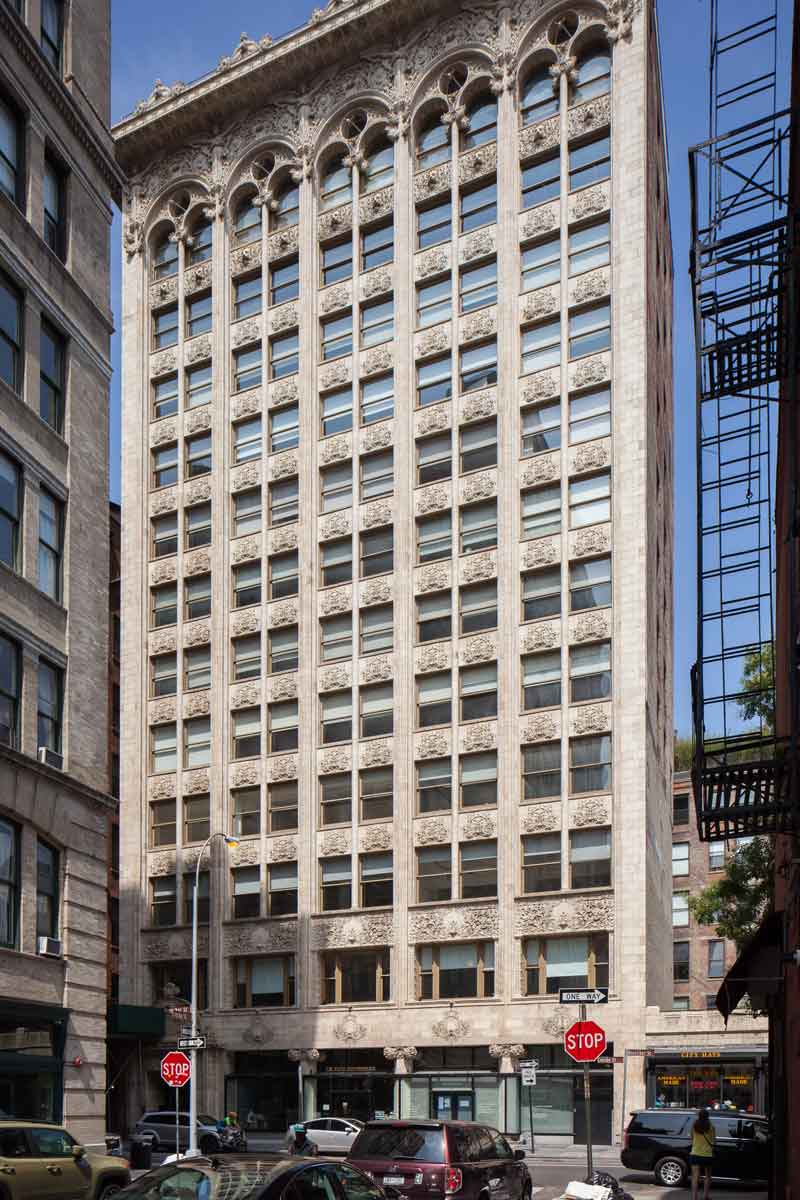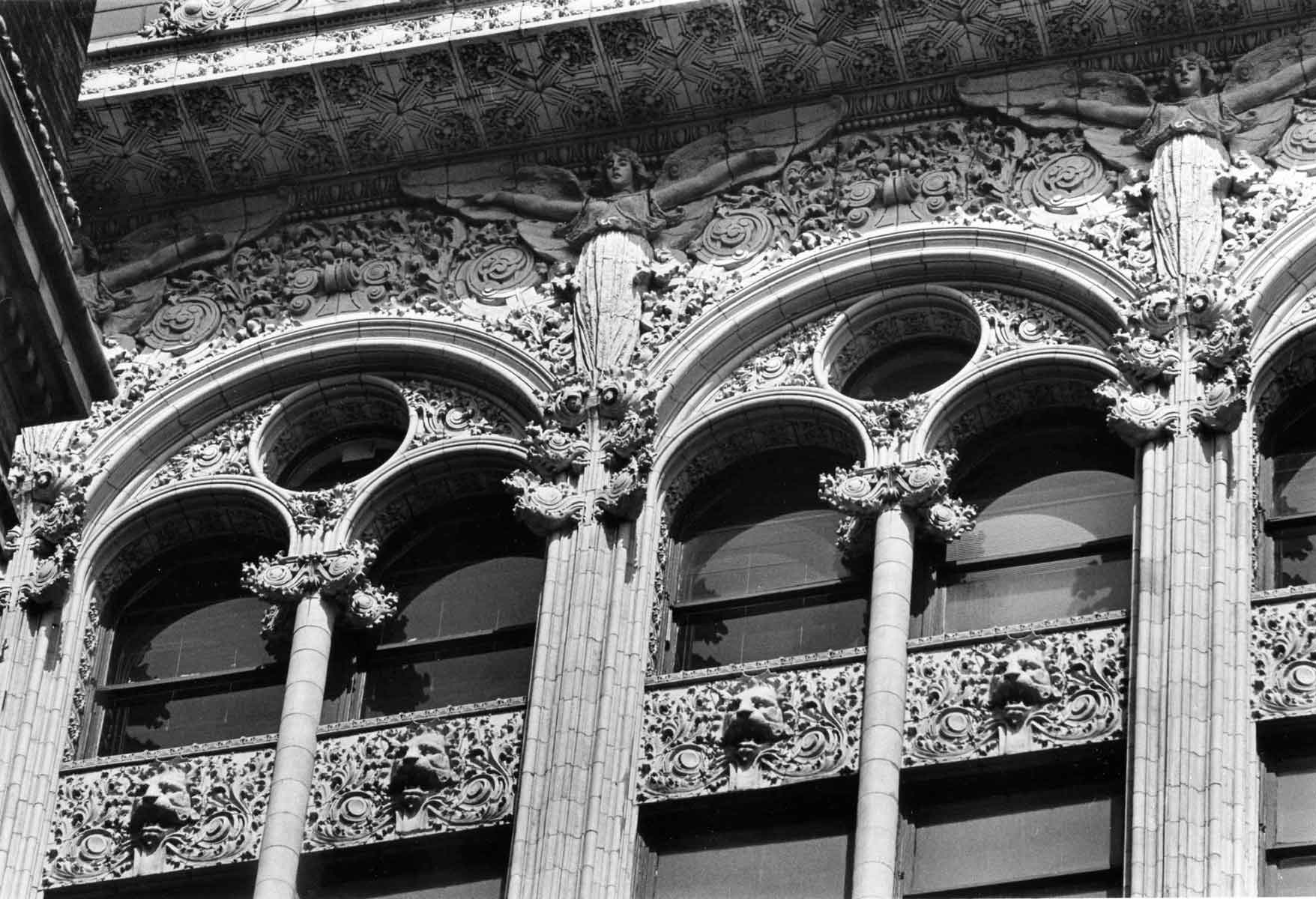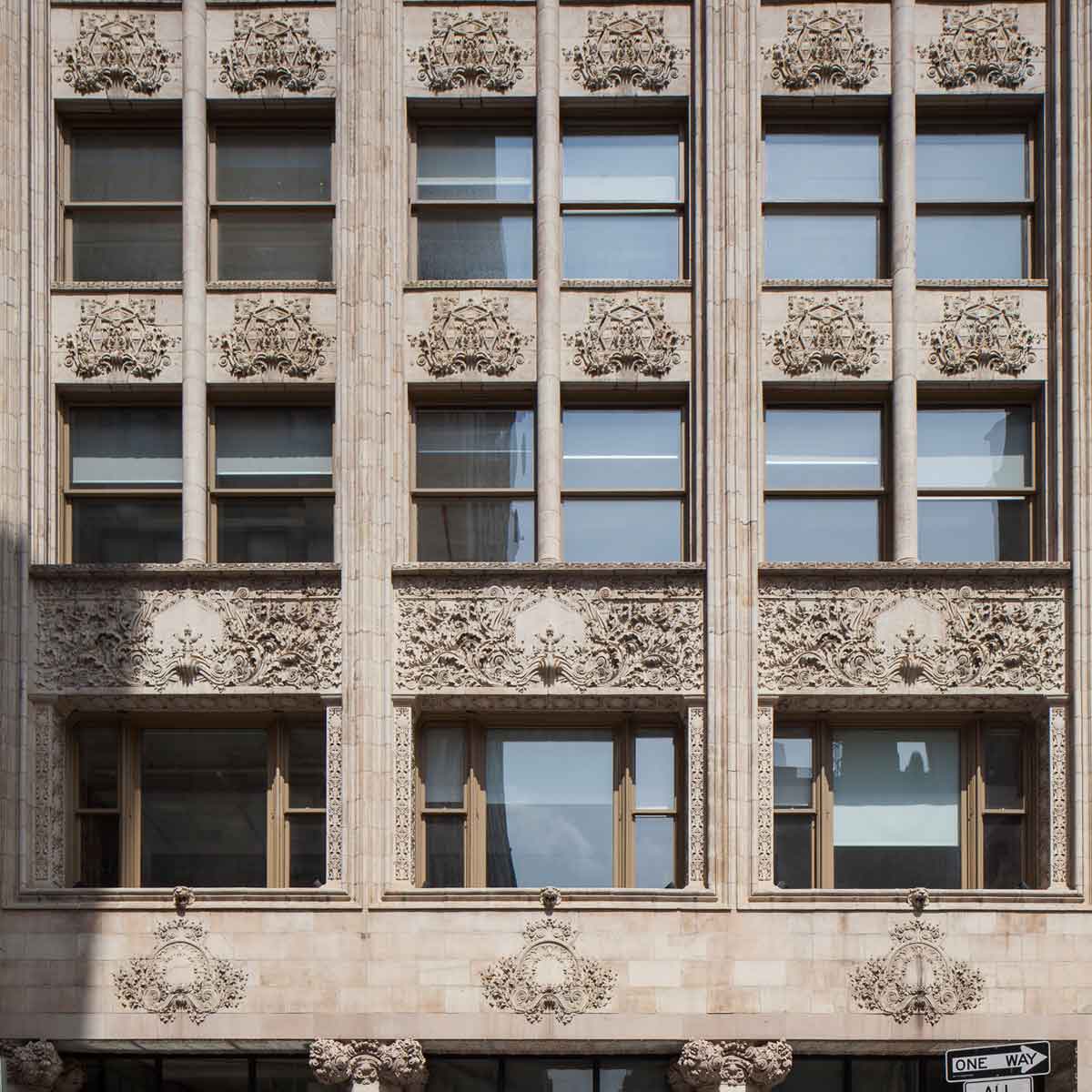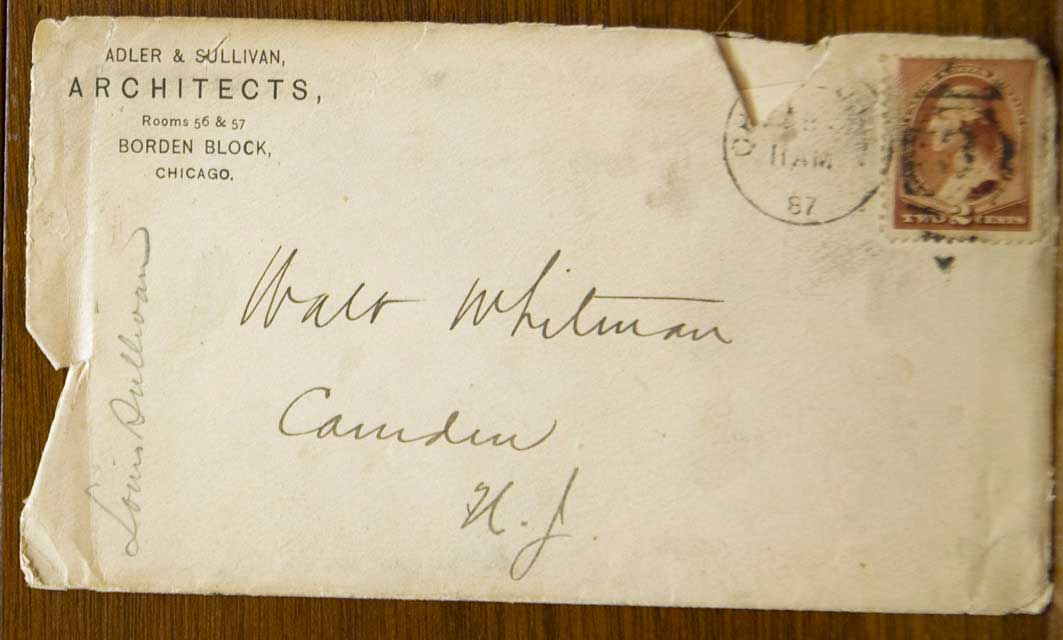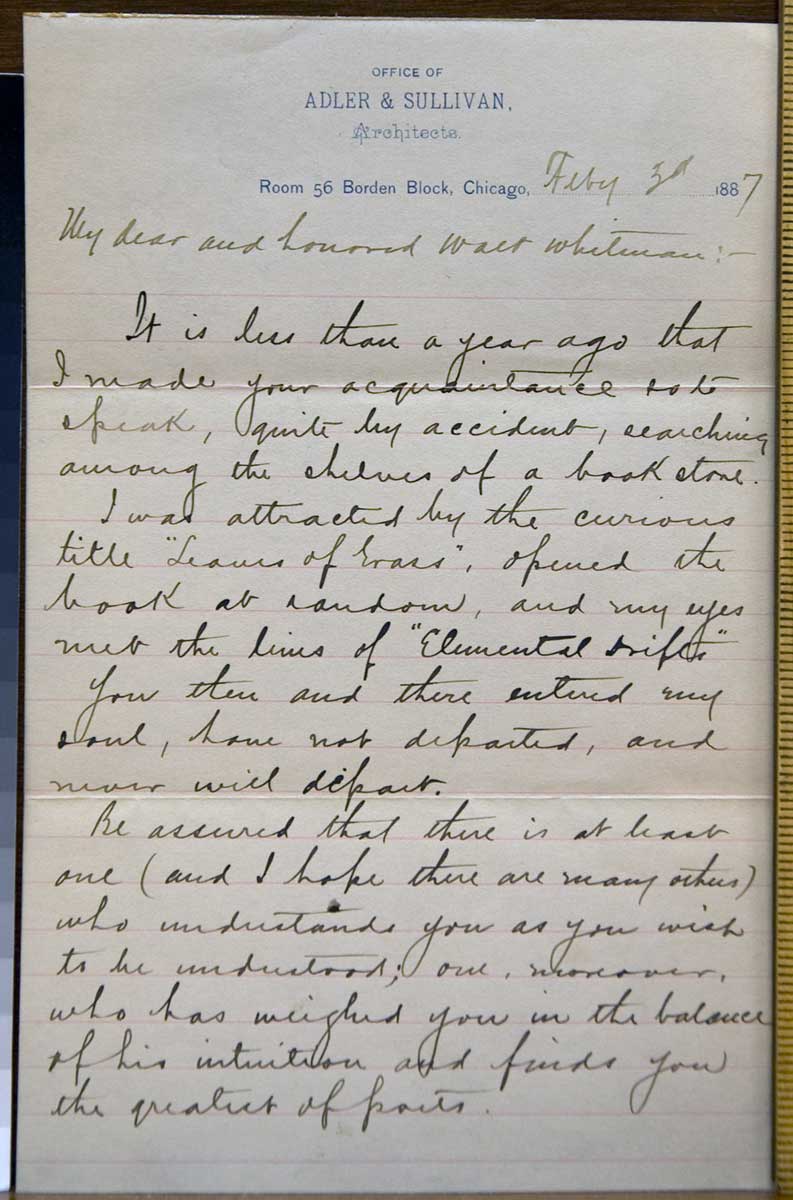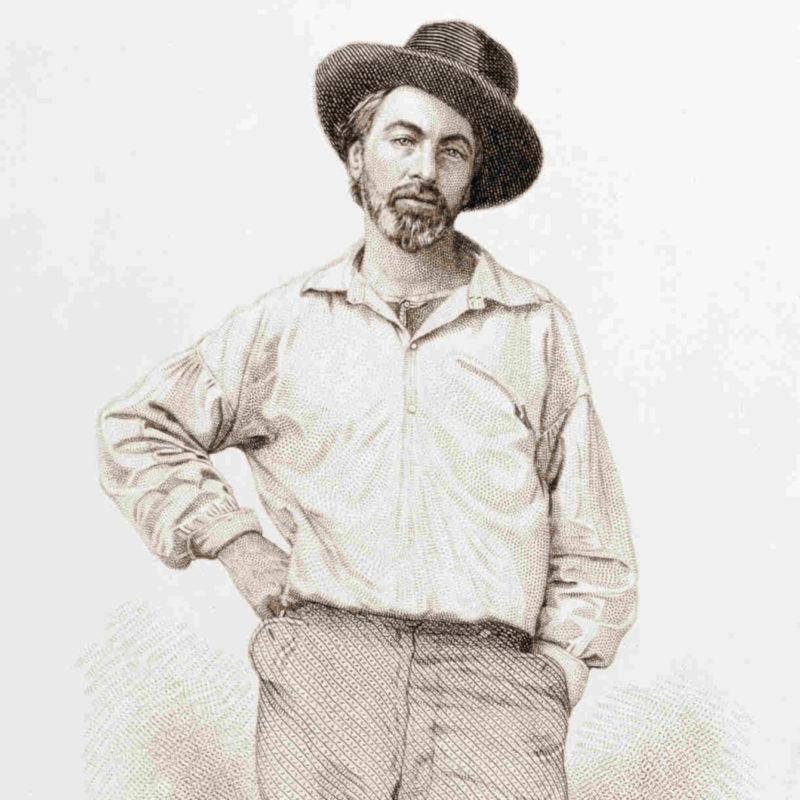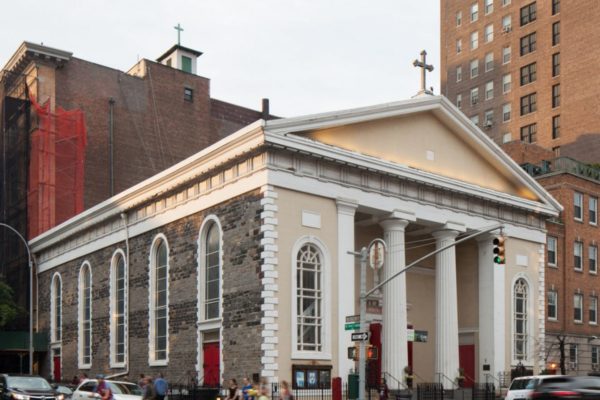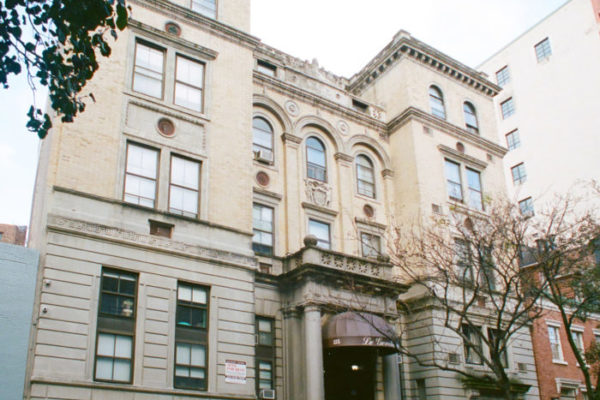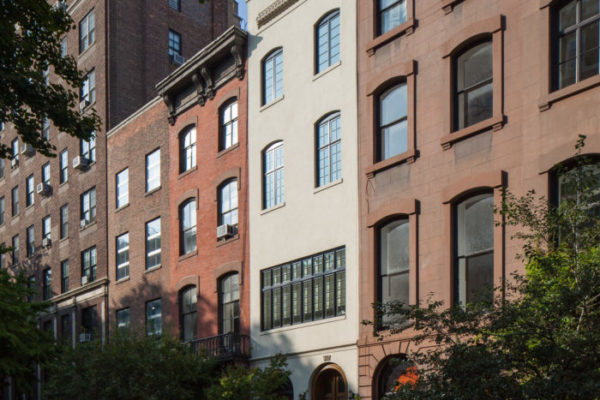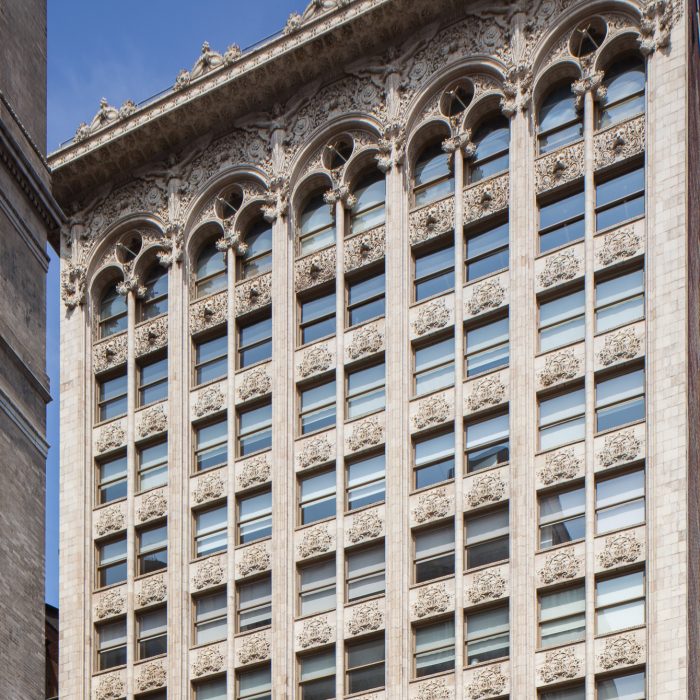
Louis Sullivan & the Bayard-Condict Building
overview
This elegant loft building is the only New York City design of Chicago master architect Louis Sullivan.
Evidence suggests the likelihood that Sullivan was a gay man.
On the Map
VIEW The Full MapHistory
The LGBT community has largely come to embrace Chicago master architect Louis Sullivan (1856-1924) as one of its own, as typified by his inclusion in the publication Out and Proud in Chicago: An Overview of the City’s Gay Community (2008). While some people may balk at this embrace, the issue of inquiry into the lives of historic LGBT personages was cogently addressed by author Paula Martinac in her pioneering The Queerest Places: A Guide to Gay and Lesbian Historic Sites (1997): “Because lesbians and gay men have had to hide for such a long time…many of the rules of evidence simply don’t apply…In claiming people as gay, I was more interested in looking for how people lived their lives–their friends and community, their work, their relationships. And yes, I sometimes relied on rumor and gossip, which has been called the ‘oral history’ of queer people.”
…there is a good deal of evidence–some personal, some architectural–to suggest Louis Sullivan may have been homosexual.
In Louis Sullivan: His Life and Work, biographer Robert C. Twombly refers to Sullivan’s exceptionally private and guarded personality, his preference for the company of men and the study of the male anatomy, his mentorships with such older men as architect John Edelmann, his intense involvement with the athletic Lotos Club in Chicago, his brief marriage at the age of 43 as his career was declining, and his complex architectural theories incorporating the “masculine” and “feminine” in his buildings’ form and ornament.
Sullivan was a longtime admirer of Walt Whitman. Soon after discovering Leaves of Grass in 1887, he wrote to the poet: “You then and there entered my soul, have not departed, and never will depart. Be assured that there is at least one (and I hope there are many others) who understands you as you wish to be understood; one, moreover, who has weighed you in the balance of his intuition and finds you the greatest of poets.”
The Bayard-Condict Building, Sullivan’s only work in New York City, is a superb example of his tall building designs. Clad entirely in white glazed terra cotta, the twelve-story building features monumental piers and mullions that soar upward to round arches, culminating in a row of winged angels amidst a profusion of Sullivan’s highly distinctive organic ornamentation.
Entry by Jay Shockley, project director (October 2017).
NOTE: Names above in bold indicate LGBT people.
Building Information
- Architect or Builder: Louis Sullivan
- Year Built: 1897-99
Sources
Christopher D. Brazee, Gale Harris, and Jay Shockley, “150 Years of LGBT History,” New York City Landmarks Preservation Commission, 2014.
Paula Martinac, The Queerest Places: A National Guide to Gay and Lesbian Historic Sites (New York: Henry Holt & Co., 1997).
Tracy Baim, ed., Out and Proud in Chicago: An Overview of the City’s Gay Community (Chicago: Surrey Books, 2008).
Do you have more information about this site?
This project is enriched by your participation! Do you have your own images of this site? Or a story to share? Would you like to suggest a different historic site?
